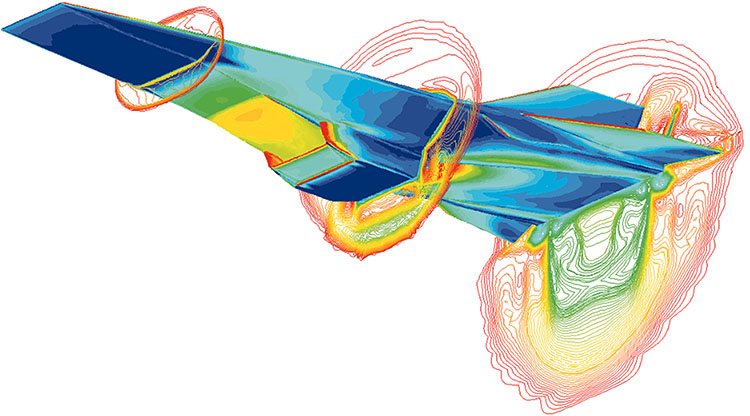Hypersonic Flow

Designing for Safety and Efficiency
UDRI performs Computational Fluid Dynamics (CFD) modeling of hypersonic flows in order to better guide the design process. CFD allows iteration and flexibility within a given design space, thus limiting cases that may not be safe or cost effective to test in the real world.
We can provide a complete modeling package. Models can be built from the ground up using Computer-Aided Design (CAD) software to design and Finite Element Analysis (FEA) and CFD software to analyze. UDRI has been particularly active in the area of flight. CFD analysis has been performed throughout the flight regime from subsonic to hypersonic flow. CFD has also been coupled with FEA to provide flight loads and heat transfer data and make changes as necessary.
CFD has been particularly useful to our customers in the design process. CFD provides the opportunity to iterate and be flexible within a given design space. Limiting cases that may not be safe or cost effective to test in the real world can be assessed using CFD. This was particularly useful in the case of expensive designs like the Ludwieg tube.
Contact Us: 937-229-2113 | E-Mail | Form
Top: CFD image showing the Hyper-X vehicle at a Mach 7 test condition with the engine operating. The image illustrates surface heat transfer on the vehicle surface (red is highest heating) and flowfield contours at local Mach number. The last contour illustrates the engine exhaust plume shape. Image credit: NASA
